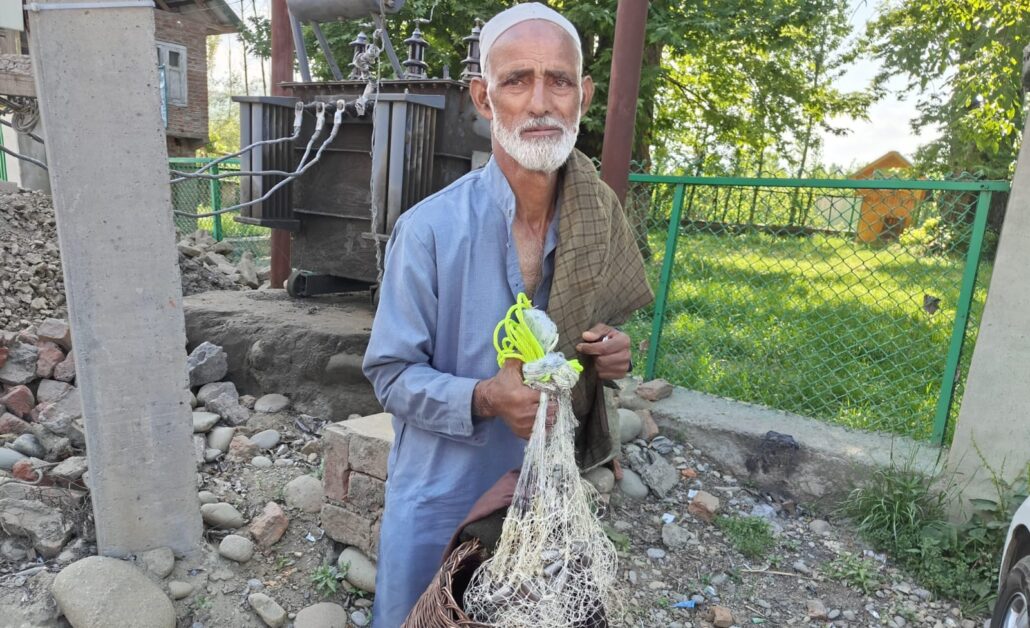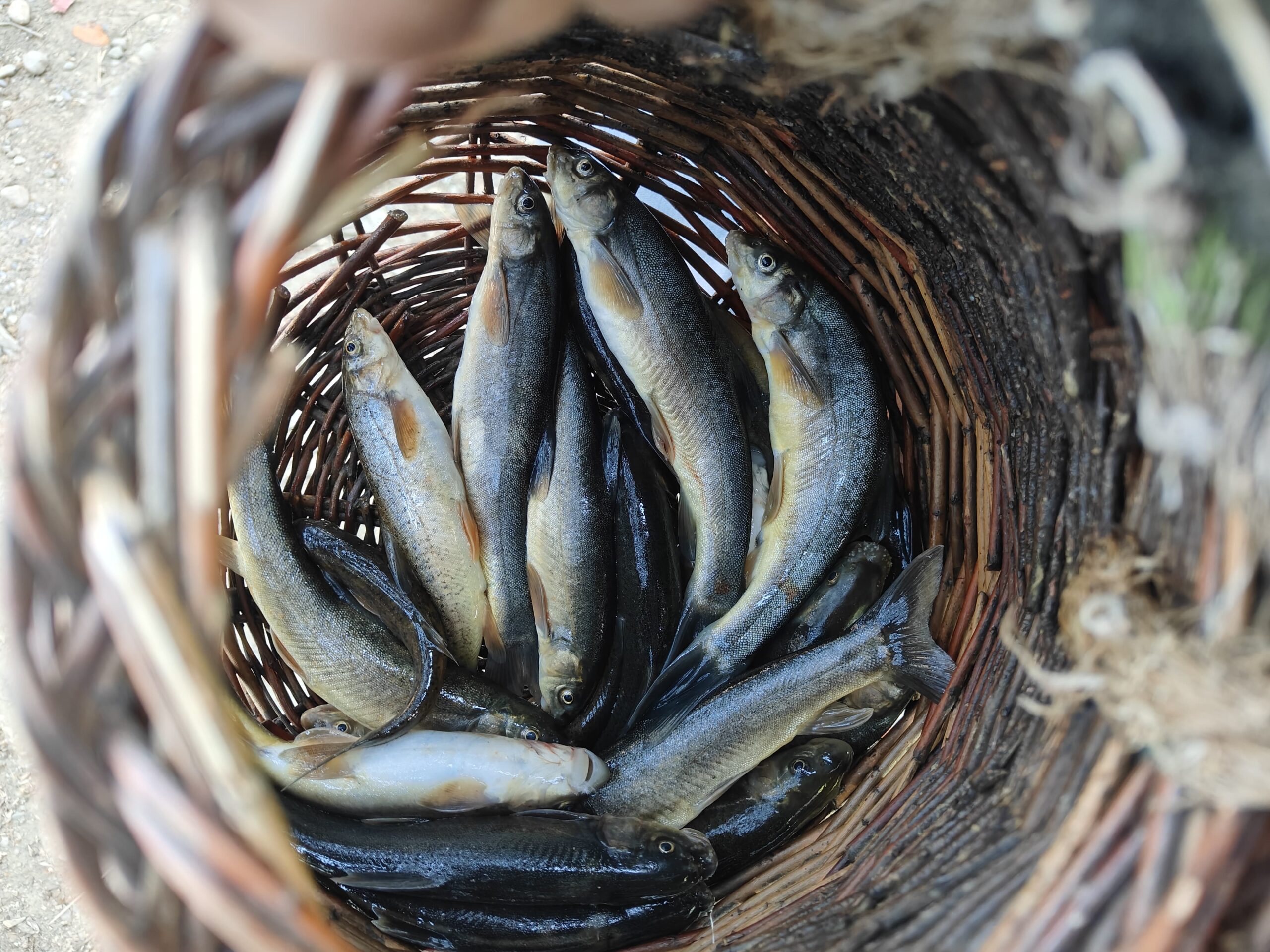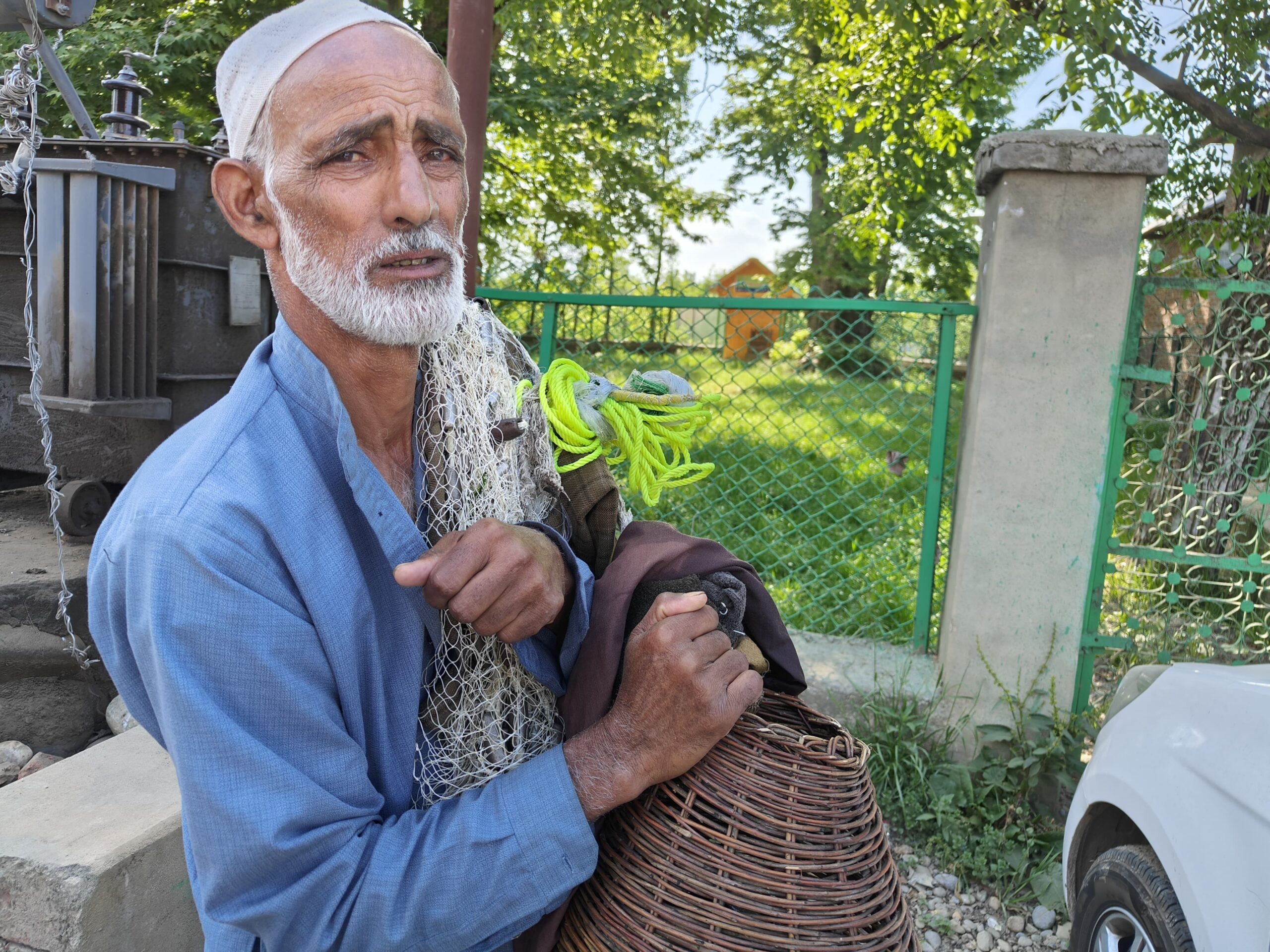
The rich fish species in the Veshow river, a major tributary of the River Jhelum in Kulgam district, are gasping for breath in the wake of the looming threat to its aquatic biodiversity due to the adverse impact of pollution.
Originating from the oligotrophic Kausarnag Lake and merging with the Jhelum River at Sangam, the Veshow River faces severe water quality degradation due to unchecked pollution and mining activities, posing a grave threat to aquatic life, particularly its trout population, which is now perilously close to extinction.
The district administration of Kulgam in August last year organized “Veshow Literary Festival” for two days to celebrate local literature, art, culture, heritage, and traditions.
According to the Jal Shakti Department, over six million gallons of drinking water is supplied daily to the district from the Veshow River. “Almost 100 villages are supplied drinking water from the river source daily.”

Experts and locals told news agency—Kashmir News Observer (KNO), “The degradation of Veshow River’s water quality is alarming. Pollution from mining operations and other sources has reached critical levels, endangering not just the trout population, but the entire aquatic ecosystem.”
Bashir Ahmad, a fisherman from Pahloo, said, ‘For decades, we have been fishing in the River Veshow, but the conditions today are totally different. Ten years ago, we were able to catch around 10 kilograms of fish, but nowadays we hardly find one to two kilograms. Our livelihood is suffering badly.’
He said, ‘There are about twenty families in Pahloo village, Kulgam, engaged in the same business. Due to low income and very few fish in the river, we are considering quitting this profession.’
When asked about the history of their profession, he explained, ‘Our generations have been involved in fishing for decades, but today the conditions are alarming. As a fisherman, I can say pollution and unplanned mining activities are the main reasons behind the degradation of the river. The water of this river used to be crystal clear, but nowadays it is in deteriorated condition.”
He further said, ‘The last time I caught trout fish in the river was two years ago; since then, I haven’t seen any trout fish in the stream. Even Kashmiri fish are becoming scarce, which is alarming.’
Ali Mohammed Dar, a local resident of Turka-Tachloo, blames nearby residents for polluting the river. He said, “People use the river as a dumping ground for garbage. Sewage pipes and toilets are also contributing to the river’s contamination, which then affects households with unsafe water and leads to waterborne diseases.”
Rauoof Ahmad Rather, a senior research scholar at SKUAST-K, told KNO that the Veshow River originates from Kausarnag and ends at Sangam. “The main issue is anthropogenic activities, specifically the horticulture and agriculture inputs, such as fertilizers and sprays, which contain heavy metals that are carcinogenic. These pollutants disturb aquatic life and can even lead to the death of some aquatic species,” he said.
Rauoof said that the water was very pure decades ago, and people used to drink directly from the river. However, the residents along its banks have now put their drainage pipes into the river, and agricultural runoff is among the main causes of the damage.
“The coliform count has also increased, which is an indicator of pollution in the Veshow River. The increase in micronutrients has exceeded the permissible limits set by World Health Organization (WHO) and Bureau of Indian Standards (BIS),” he said.
He also said that the Rohu (Labeo rohita), a species native to Kashmir that thrives in freshwater and temperate regions like this river, is being affected by pollution. The pollutants increase the water temperature, impacting the fish habitat. If the pollution persists, the fish might become extinct in the river. This species prefers running water, not pond water.
“We conducted a survey and observed a decline in fish populations. The pollutants have also affected other species in the river. Also, mining activities in the river have impacted the survival of these species. The extraction of minerals has disrupted the fish species, making sediments more visible in the river,” Rauoof added.
He suggested that the government should prevent residents from discharging liquid waste into the river. Vegetation should be grown along the riverbanks, and illegal mining must be strictly banned. The expert also advised farmers to avoid using fertilizers during the rainy season.

District Mineral Officer (DMO) Kulgam, Murtaza Bashir Bhat told KNO that, “There is a demand-supply to ongoing projects. The material has to be supplied from somewhere. Illegal mining surely damages our ecosystem, and there are profit-making groups of people who are black sheep of society.”
He said, “We are unable to match the demand-supply ratio. There is an agenda of sustainable development; we should use natural resources sustainably to avoid negative outcomes.”
Bhat also said, “The Fisheries Department deals with fisheries activities and environmental clearances under the Fisheries Act.”
Mushtaq Ahmad Shah, Assistant Director of Fisheries Kulgam, told KNO that the livelihood of stakeholders (fishermen) has been affected for the past couple of years due to a decline in catches. “Currently, we have over 500 fishermen registered with the department in Kulgam district, all of whom have permission/licences.”
He said that improper mining practices are a major reason for this decline. The use of machinery in mining disturbs aquatic life, destroying the breeding and feeding grounds of fish.
“The fish species in the Veshow River are known for their excellent taste, but the population has been decreasing day by day despite regular fish stocking. The department sources fish seeds from Manasbal and other fish farms and hatcheries,” he added—(KNO)




